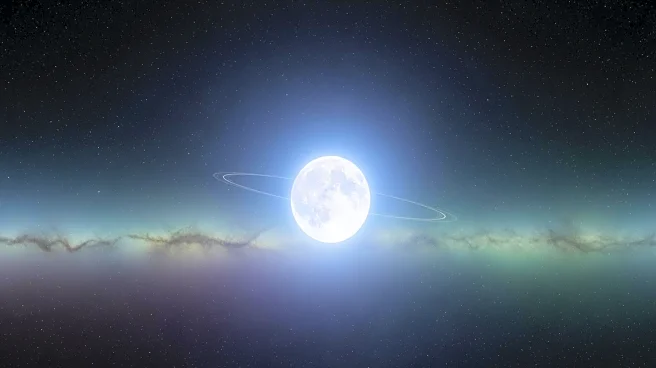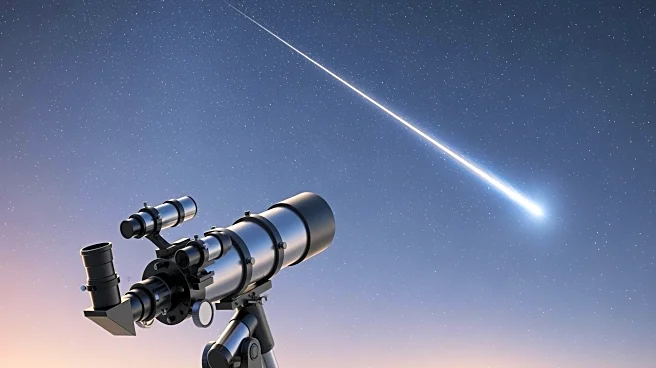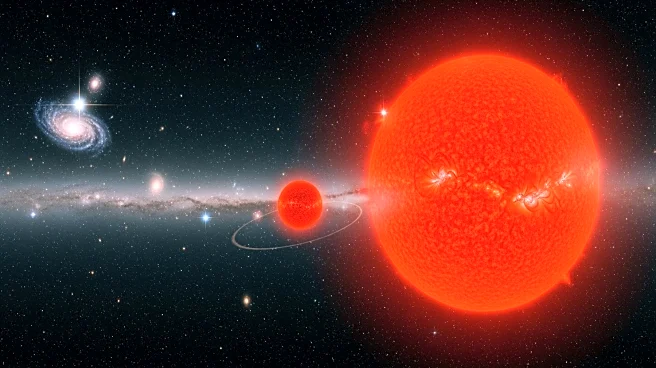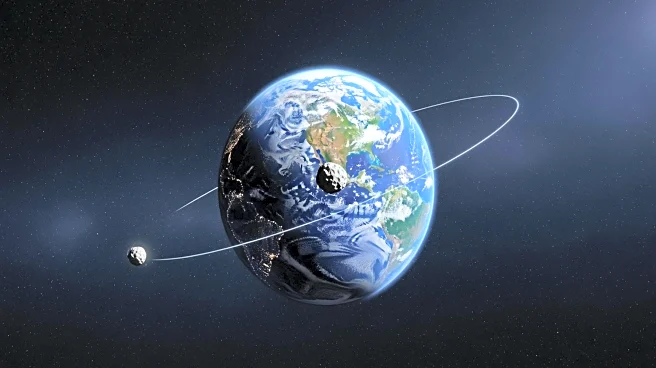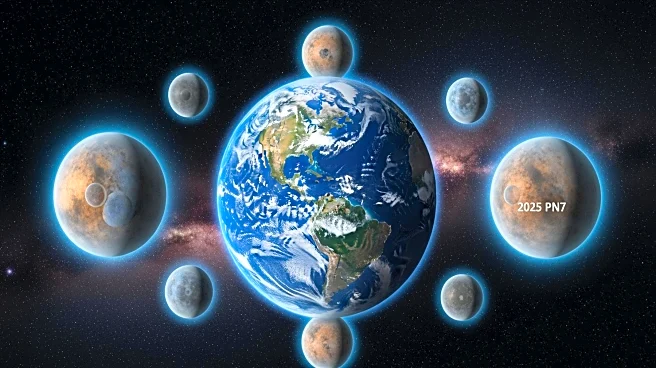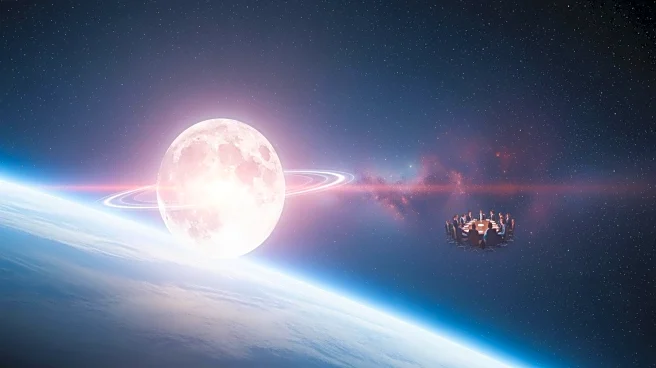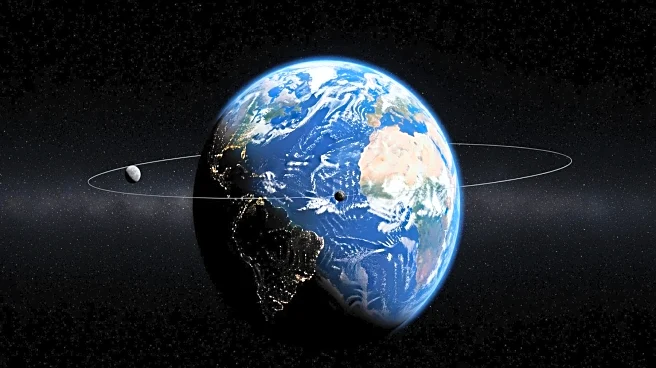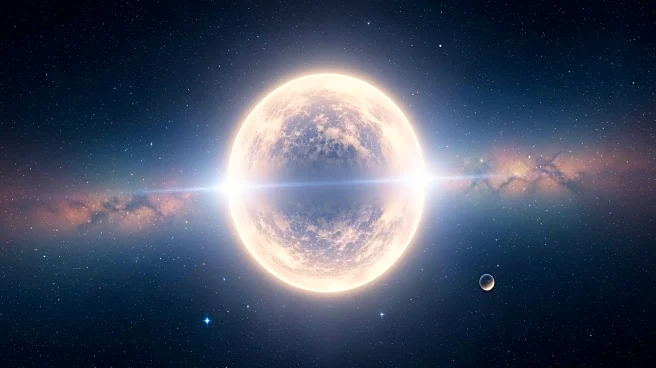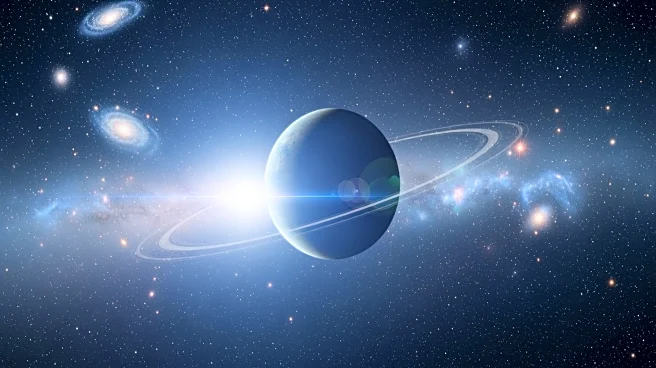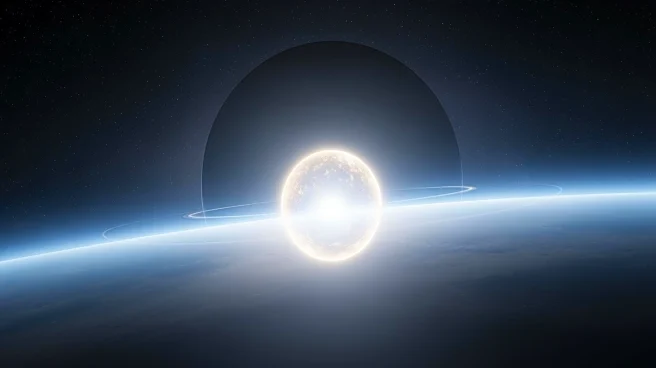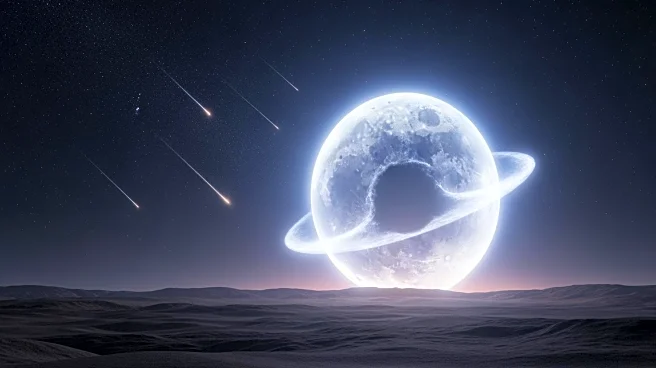What's Happening?
Astronomers have identified a new quasi-lunar moon, 2025 PN7, which orbits the sun in tandem with Earth, maintaining a 1:1 resonance. This discovery was made using the Pan-STARRS 1 telescope in Hawaii,
which detected the asteroid due to its brightness. Unlike traditional moons, quasi-lunar moons are not gravitationally bound to Earth but follow their own solar orbit, occasionally appearing close to Earth. 2025 PN7 has been in a quasi-satellite phase since 1965 and is expected to remain so until 2083. This marks the seventh confirmed quasi-lunar moon, with more potentially awaiting discovery. These moons are part of the Arjuna group of asteroids, which share similar orbital paths with Earth.
Why It's Important?
The discovery of quasi-lunar moons like 2025 PN7 provides insight into the dynamic nature of Earth's orbital environment and the potential for more such bodies to be identified. These findings contribute to our understanding of near-Earth objects and their interactions with our planet. The study of these asteroids can enhance our knowledge of celestial mechanics and the potential risks or benefits they pose. As these bodies are part of the Arjuna group, their study could lead to advancements in asteroid tracking and space exploration strategies.
What's Next?
Further research and observation are likely to continue, focusing on the Arjuna group of asteroids to identify more quasi-lunar moons. This could lead to new discoveries about Earth's orbital companions and their long-term trajectories. Scientists may also explore the implications of these moons for future space missions, potentially using them as stepping stones for exploration or study.
Beyond the Headlines
The presence of quasi-lunar moons raises questions about the gravitational dynamics and stability of Earth's orbital environment. Understanding these interactions could have implications for future space travel and the development of technologies to monitor and potentially utilize these celestial bodies.
